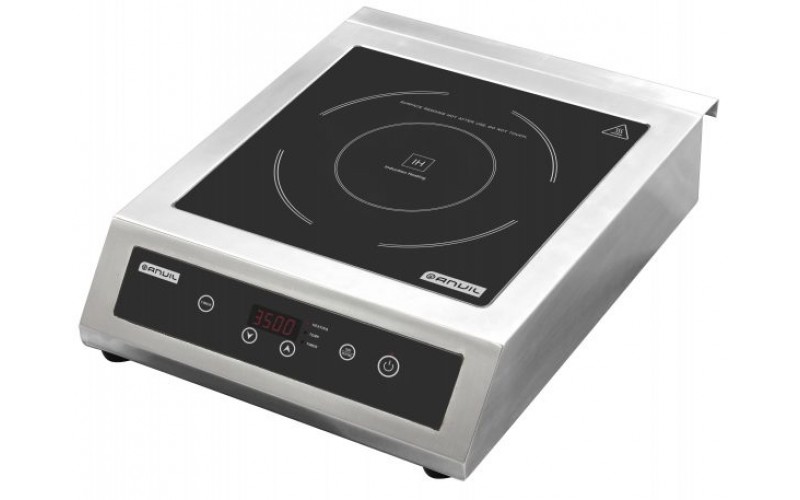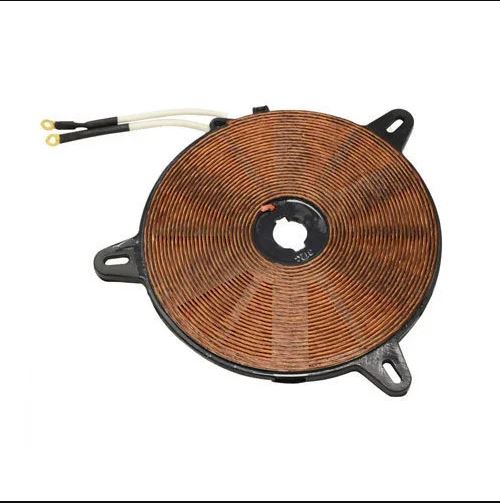Wondering what an induction cooker is? We have all the answers you need. Induction cookers are built like your regular electric hot plates, but it works slightly different. If you’ve ever been intrigued by the term “induction cooking,” you’ll understand all about it on this page.
This guide explains what an induction cooker is, focusing on the science behind their operation, their benefits, and their usage.

Here’s the Answer To What an Induction Cooker Is:
An induction cooker is a modern kitchen appliance that utilizes electromagnetic induction to heat cookware directly without the need for a traditional heating element like gas flames or electric coils.
At first glance, this cooker might appear like any other cooktop, but beneath its sleek surface lies a fascinating scientific principle that makes it stand out.
How Does Induction Cooking Work?
Below is an illustration of how induction cooking works:
1. Through Electromagnetic Induction Principle
Electromagnetic induction is a phenomenon in physics where an electromotive force (EMF) is induced in a conductor when it is exposed to a changing magnetic field. This principle is the foundation of induction cooking, a modern and efficient method of cooking that relies on electromagnetic induction to generate heat directly in the cooking vessel.
In induction cooking, an alternating current (AC) passes through a coil of copper wire located beneath the cooking surface. This current produces a rapidly changing magnetic field around the coil.
2. Works With Ferromagnetic Cookware
Ferromagnetic cookware plays a crucial role in induction cooking. It leverages the principles of electromagnetic induction to generate heat efficiently.
Ferromagnetic materials are those that can be magnetized and are strongly attracted to magnets. In the context of induction cooking, cookware made from ferromagnetic materials, such as iron or steel, is essential. This is because induction cooking relies on the induction of an electric current in the cookware through a changing magnetic field.
When ferromagnetic cookware is placed on an induction cooktop, the alternating current passing through the induction coil beneath the cooking surface generates a rapidly changing magnetic field. This magnetic field induces an electric current within the ferromagnetic material of the cookware, following the principles of electromagnetic induction.
As a result of this induced electric current, the cookware itself heats up. The heat is then transferred to the food or liquid inside the cookware, facilitating the cooking process. Importantly, the heat is generated directly in the cookware, making induction cooking highly efficient and responsive.
It’s worth noting that cookware made from materials that are not ferromagnetic, such as aluminum or copper, will not work on an induction cooktop.
3. Magnetic Field Interaction
In induction cooking, magnetic field interaction refers to a point where the interaction between a changing magnetic field and ferromagnetic materials induces the generation of heat. In this cooktop, a coil of copper wire beneath the cooking surface is supplied with alternating current (AC). This flowing AC generates a constantly changing magnetic field around the coil.
When a compatible pot or pan is placed on the ceramic cooktop, the magnetic field generated by the coil induces electrical currents in the cookware due to its ferromagnetic properties. These induced currents result in the cookware heating up due to the resistance of the material to the flow of electricity.
4. Heat Generation
The heat is generated directly within the base of the cookware, which means that the cooking surface itself remains relatively cool. Only the area of the cookware in contact with the induction cooktop becomes hot. This direct heat transfer allows for rapid and efficient cooking.
5. Temperature Control
Induction cookers offer precise temperature control. Users can select specific cooking temperatures and settings, which the cooker maintains accurately. This precise control is especially useful for delicate cooking tasks like simmering or melting, as well as for precise searing or frying.
| You might also want to read about what a gas cooker is.
Components of an Induction Cooker
Understanding the various components of an induction cooker can help you make an informed decision when choosing the right one for your kitchen. Let’s break down the key parts:
1. Cooktop Surface

Induction cookers come with a smooth glass-ceramic surface that’s easy to clean. The surface also houses the touch controls for temperature and power settings.
2. Induction Coils

Beneath the cooktop surface, you’ll find the induction coils that generate the magnetic field. The number and arrangement of these coils determine the number of cooking zones on the cooktop.
3. Control Panel
The control panel provides you with the interface to adjust temperature, power levels, and cooking times. Modern induction cookers often feature digital displays and touch-sensitive controls for ease of use.
The Advantages of Induction Cooking
Induction cooking offers a range of advantages that have contributed to its growing popularity among both home cooks and professional chefs. Here are some of its benefits:
1. Rapid Heating
Induction cookers heat up significantly faster than traditional gas or electric stovetops. The direct transfer of heat to the cookware ensures swift temperature changes, reducing cooking times.
2. Energy Efficiency
The focused heat generation and rapid response of induction cookers lead to less energy wastage. Studies have shown that induction cooking is more energy-efficient compared to other methods.
3. Precision and Control
Induction cookers provide precise temperature control, allowing you to achieve specific heat levels for delicate tasks like simmering or searing. This precision minimizes the risk of overcooking or burning dishes.
4. Safety
One of the most remarkable safety features of induction cookers is that they remain cool to the touch while in use. The cooktop itself doesn’t get hot; instead, the heat is generated within the cookware. This feature reduces the risk of burns and kitchen accidents.
5. Easy Cleanup
Since the cooktop doesn’t get excessively hot and the food doesn’t spill onto the surface, cleaning up after cooking becomes a breeze. No more scrubbing burnt-on residue!
| Related: See how to cook with an electric cooker.
Is Your Cookware Induction-Ready?
While induction cooking offers numerous benefits, it’s important to note that not all cookware is compatible with induction cookers. To ensure successful cooking, you’ll need to use cookware that has magnetic properties.
Here’s how to determine if your cookware is induction-ready:
- Place a magnet on the bottom of your cookware. If it sticks firmly, your cookware is suitable for induction cooking.
- Look for an induction symbol or label on the packaging of your cookware. Manufacturers often indicate whether a particular product is compatible with induction cookers.
When selecting cookware, prioritize options that are designed specifically for induction cooking to maximize the benefits of this technology.
| You might also want to check out our guide on how to use a pressure cooker for the first time.
Final Note
As we conclude our exploration of induction cookers, it’s clear that these appliances are more than just a kitchen upgrade—they’re a gateway to modern culinary experiences. From their scientific underpinnings to the practical advantages they offer, induction cookers have redefined how we approach cooking.
So, now you know what an induction cooker is and how it works. Embrace the adventure of induction cooking and elevate your kitchen endeavors to new heights.
Sources
What is Electromagnetic Induction? (Faraday’s Law) – SimScale
What Kind of Pans Can You Use on an Induction Cooktop? – SharpUSA
